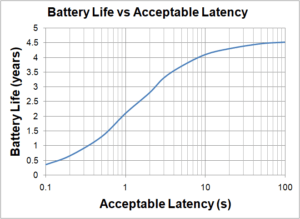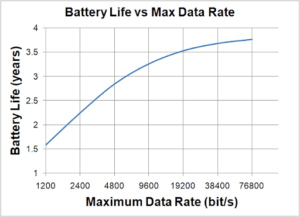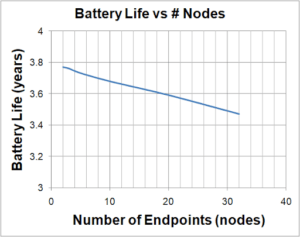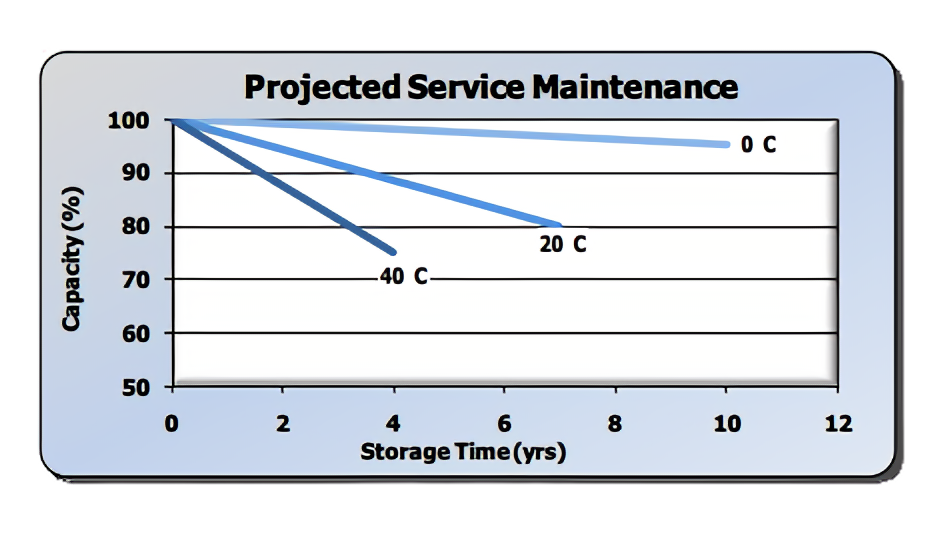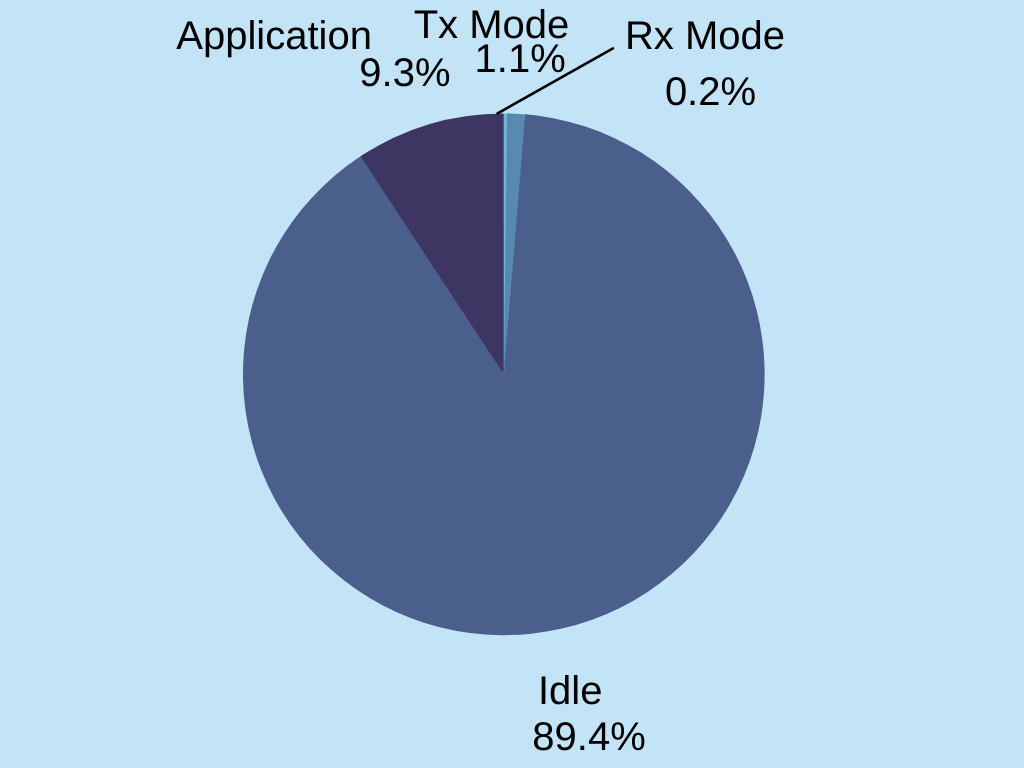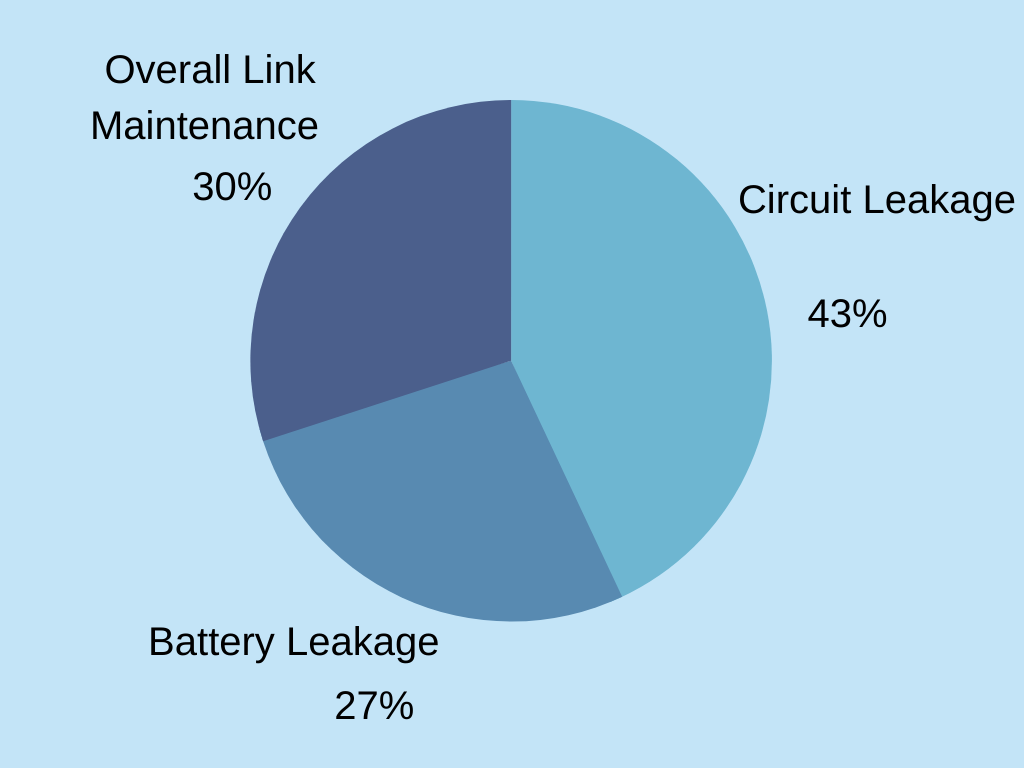Energy Efficiency
- Optimized radio protocols minimize overhead.
- Sophisticated algorithms result in meticulous synchronization.
- Energy efficient transmitting and receiving components conserve battery life.
- Link budget intelligently adapts to your needs using only the energy necessary.
- Low leakage components eliminate waste.
- Precision power management prioritizes and swiftly detects and reacts to changing conditions.
A base and/or network extender may be powered from a small solar panel where USB or grid power is not convenient. The endpoints can be powered from coin cells, solar cells, or a single pair of AA Alkaline batteries can last for up to several years as one of the multiple powering options.
Estimating Energy Needs
- Quantity of real information that must be exchanged (there are often ways of minimizing the data transferred without compromising the information conveyed).
- Typical distance between base and endpoints and propagation conditions (pay attention to the relative heights of the respective antennas).
- The maximum latency acceptable (delay between when a message sequence initiated at one end of the link can be acted upon at the other end).
- Operating temperature (extreme temperatures degrade battery life depending on chemistry).
- Idle: This is the energy that does not directly contribute to receiving or transmitting messages. Factors include:
- Circuit Leakage (energy consumed simply because there is an applied voltage).
- Battery Self Leakage (batteries lose energy just sitting on the shelf).
- Link Maintenance (low latency requires always ON communication).
- Transmit: This is the energy consumed in transmitting information. Factors include:
- The amount of data being shared (two way communication allows you to share what you need and need what you share).
- Transmit power and efficiency (get the most power for the least energy).
- Packet overhead (eliminate excess bytes).
- RF Output power (lower RF power means dramatically longer battery life).
- Data rate (Higher bit rates results in dramatically less energy consumed).
The link automatically optimizes the data rate and transmitted power to your networks needs on an individual endpoint basis. The less data that you need to communicate the less energy will be consumed.
- Receive: Energy consumed in receiving information. Factors include:
- Receive efficiency (use the least energy possible in decoding the packet).
- Packet overhead (eliminate excess bytes).
- Synchronization precision (only use energy when you need to).
- Data rate (Higher bit rates results in dramatically less energy consumed).
- The amount of data being shared (two way communication allows you to share what you need and need what you share).
- The number of endpoints on the network.
Taking into consideration environmental factors the link automatically balances energy consumption against link reliability – using only as much energy as required to keep the link operating reliably.
The following curves provide an indication of the how the various factors influence energy consumption. In all cases a pair of AA Alkaline batteries is assumed for the endpoint.


